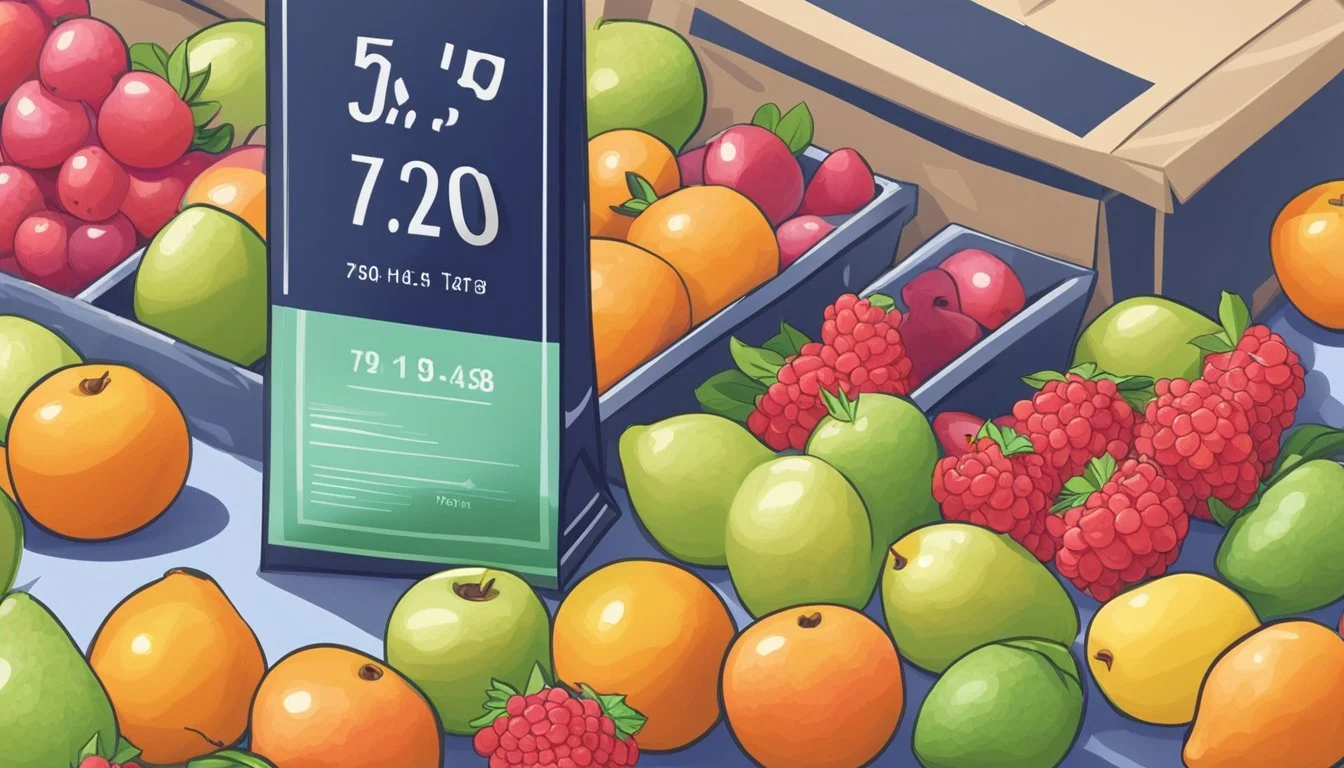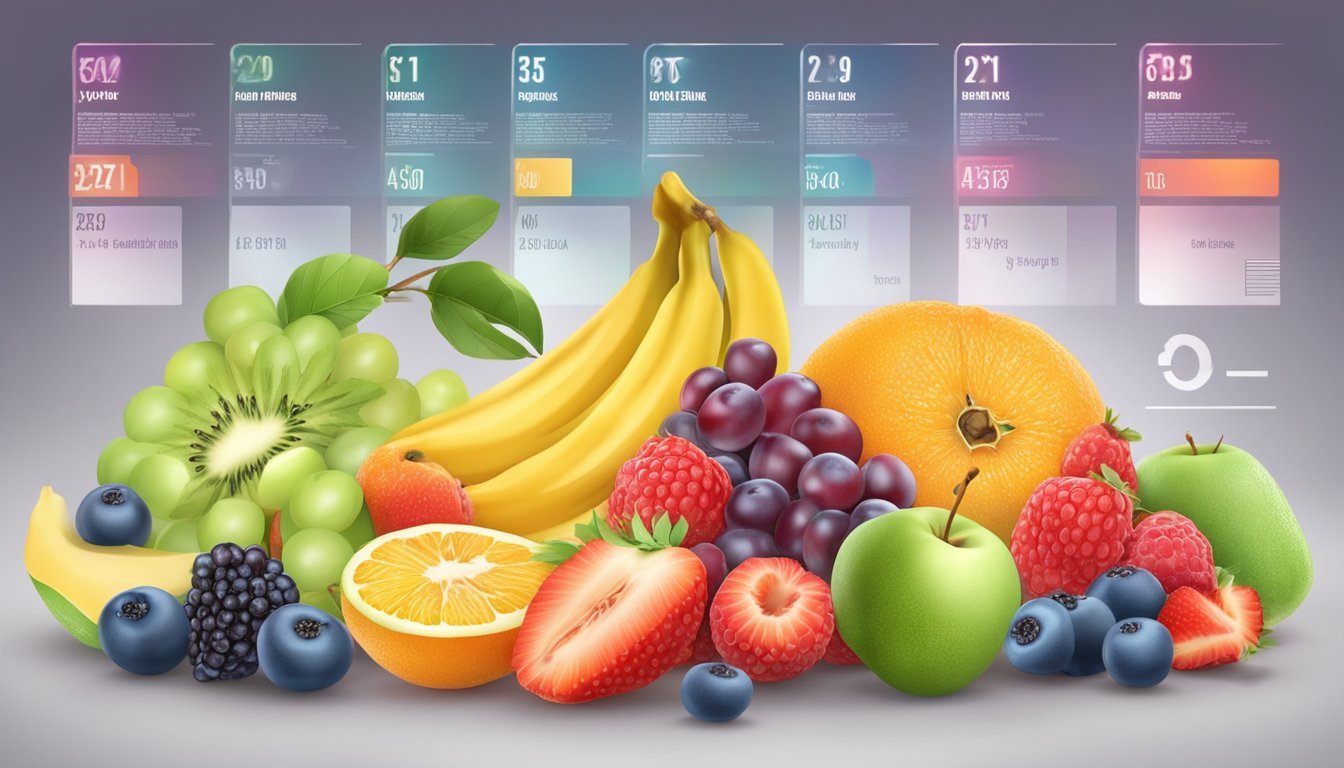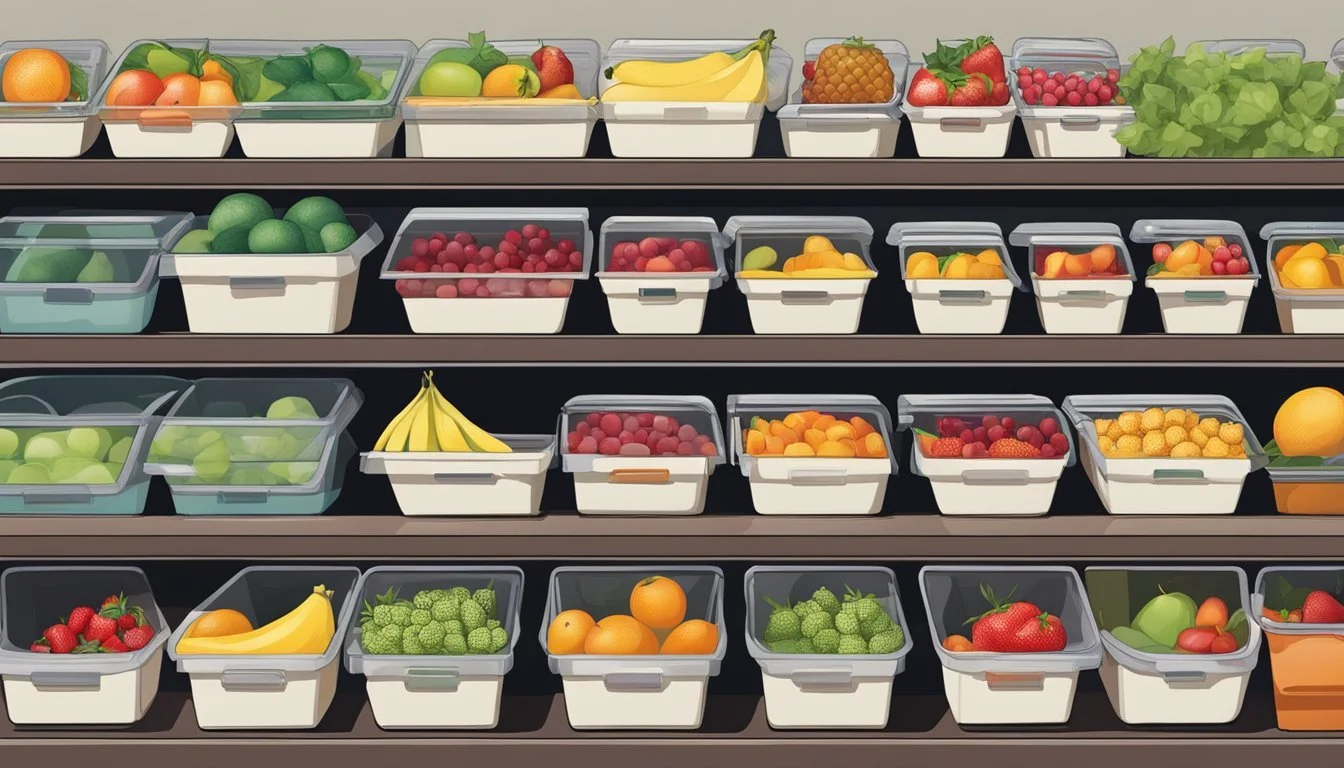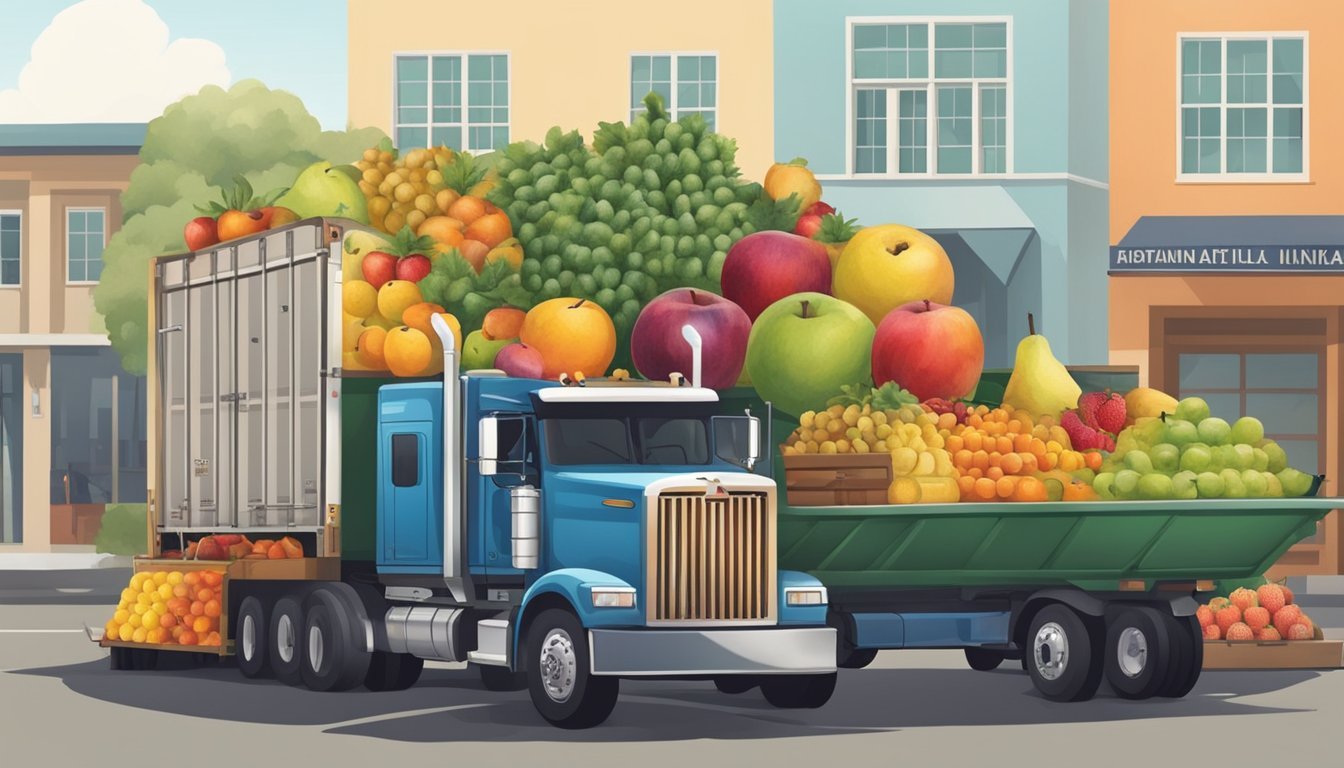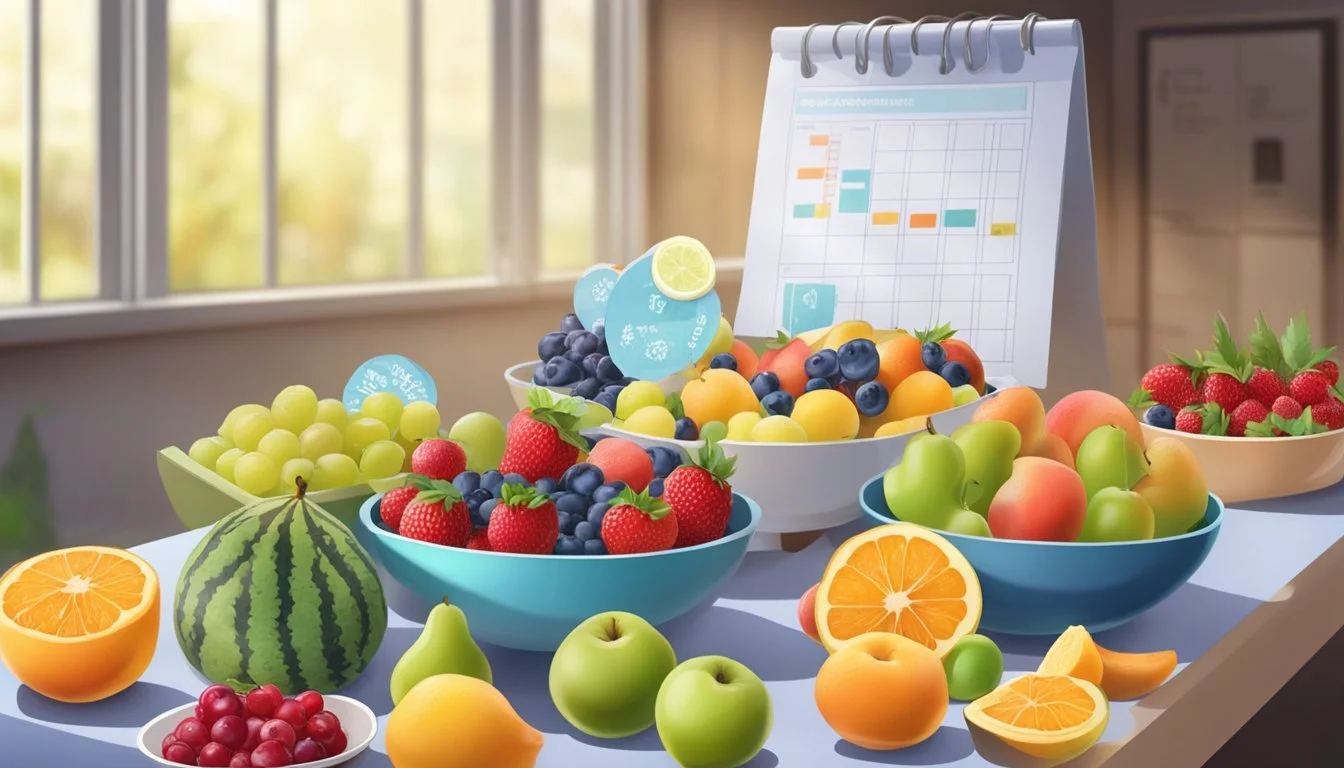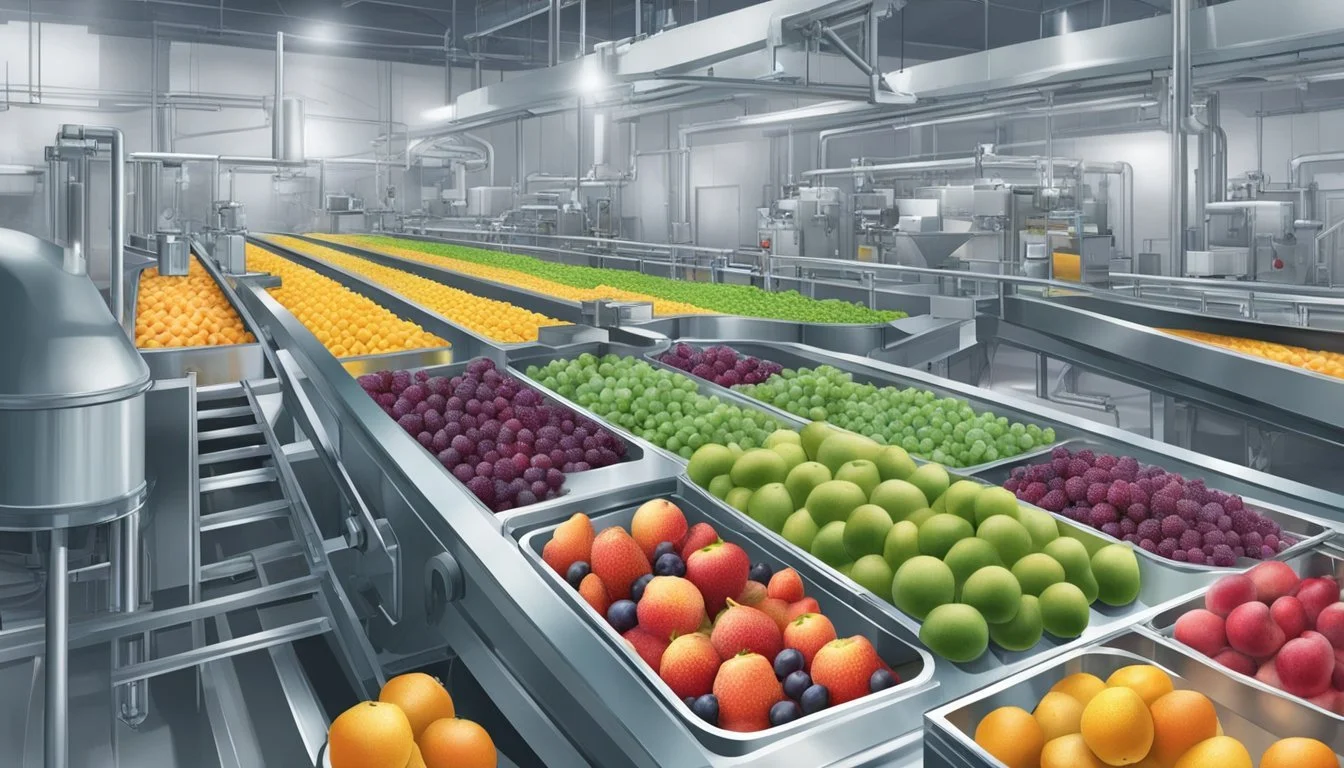Fresh vs. Frozen Fruit: Uncovering the Most Cost-Effective Option
When it comes to purchasing fruit, many consumers wonder whether fresh or frozen options are more cost-effective. Recent studies have shed light on this question, providing valuable insights for budget-conscious shoppers. Research indicates that frozen fruit is generally about one-third cheaper than fresh fruit. This significant price difference can lead to substantial savings for those who regularly incorporate fruit into their diets.
The cost advantage of frozen fruit stems from several factors. Frozen fruit is typically harvested at peak ripeness and immediately processed, allowing for bulk purchasing and efficient distribution. Fresh fruit, on the other hand, often requires more careful handling and has a shorter shelf life, which can increase its overall cost to consumers. Additionally, freezing fruit at home when it's in season and prices are low can be even more economical than purchasing pre-frozen options.
While cost is an important consideration, it's worth noting that both fresh and frozen fruit offer similar nutritional benefits. Studies comparing the antioxidant levels in fresh and frozen strawberries and raspberries found no significant differences between the two. This means that consumers can choose frozen fruit without compromising on nutritional value, making it an attractive option for those looking to balance health and budget concerns.
Comparing Costs of Fresh and Frozen Fruits
The cost of fresh and frozen fruits can vary significantly based on factors like location, season, and availability. Understanding these price dynamics helps shoppers make informed decisions.
Price Analysis Across Different Regions
Fruit prices fluctuate across regions due to transportation costs, local supply, and demand. Urban areas often see higher prices for fresh fruits compared to rural regions closer to farms. Frozen fruits tend to have more consistent pricing nationwide.
Supermarkets in coastal cities typically charge more for fresh tropical fruits than inland locations. However, frozen varieties of these fruits usually maintain similar prices regardless of location.
Some areas benefit from local fruit abundance. For example, Florida residents enjoy lower prices on fresh citrus, while Washington state offers affordable fresh apples.
Seasonal Variations and Their Economic Impact
Fruit seasonality greatly affects pricing. In-season fruits are generally cheaper and more abundant. Out-of-season fruits often come with premium prices due to increased transportation and storage costs.
Summer brings lower prices for berries, melons, and stone fruits. Winter sees cheaper citrus fruits. Frozen fruits maintain relatively stable prices year-round, offering a cost-effective alternative when fresh counterparts are expensive.
Bulk buying during peak seasons can lead to significant savings. Many shoppers freeze excess fresh fruit at home to enjoy cost benefits throughout the year.
Budget-Conscious Shopping for Fruits
Smart shopping strategies can maximize fruit affordability. Comparing prices between fresh and frozen options is crucial. Frozen fruits often provide better value, especially for out-of-season varieties.
Buy fresh fruits in season for best prices
Check for sales and discounts on both fresh and frozen fruits
Consider store brands for frozen fruits, which are often cheaper
Buy in bulk when prices are low and freeze at home
Mixing fresh and frozen fruits in your diet can optimize both nutrition and cost-effectiveness. Use fresh for immediate consumption and frozen for smoothies, baking, or later use.
Nutritional Profile and Benefits
Both fresh and frozen fruits offer valuable nutrients and health benefits. Their nutritional content can vary depending on factors like processing and storage methods.
Vitamin and Mineral Content Comparison
Fresh fruits generally contain high levels of vitamins and minerals when consumed shortly after harvest. Vitamin C is particularly abundant in many fresh fruits. However, this nutrient can degrade over time during transport and storage.
Frozen fruits are often picked at peak ripeness and flash-frozen, which helps preserve their nutrient content. Studies have shown that frozen fruits can retain comparable or even higher levels of certain vitamins and minerals compared to their fresh counterparts.
For example, research found that frozen apricots had significantly higher vitamin C content than fresh apricots. The U.S. Department of Agriculture notes that frozen fruits can be nutritionally similar to fresh options.
Antioxidant Levels in Fresh vs. Frozen Fruit
Antioxidants are compounds that help protect cells from damage. Both fresh and frozen fruits can be excellent sources of these beneficial substances.
Studies comparing antioxidant levels in fresh and frozen fruits have yielded mixed results. Some research indicates that freezing can increase antioxidant concentrations in certain fruits.
A study on strawberries and raspberries found no significant differences in antioxidant levels between fresh and frozen samples. In contrast, frozen apricots showed higher antioxidant content compared to fresh ones.
These findings suggest that frozen fruits can be a reliable source of antioxidants, often matching or exceeding the levels found in fresh fruits.
Health Benefits of Consuming Fruits
Regular fruit consumption, whether fresh or frozen, is associated with numerous health benefits. Fruits are rich in essential nutrients and fiber, which contribute to overall well-being.
A diet high in fruits may help reduce the risk of heart disease. The fiber content in fruits aids digestion and promotes feelings of fullness, which can support weight management.
Fruits provide various vitamins and minerals crucial for bodily functions. For instance, many fruits are good sources of potassium, which helps regulate blood pressure.
The antioxidants found in fruits may help protect against cellular damage and reduce inflammation. These effects could potentially lower the risk of chronic diseases.
Organic fruits, both fresh and frozen, offer similar health benefits without the use of synthetic pesticides.
Impact of Storage and Ripeness
Storage conditions and ripeness at purchase significantly affect the quality, nutrition, and cost-effectiveness of fruit. These factors influence shelf life, nutrient retention, and potential food waste.
Storage Conditions and Their Effects on Freshness
Proper storage is crucial for maintaining fruit quality. Refrigeration slows ripening and decay for many fruits, extending shelf life. However, some fruits like bananas and tomatoes are best kept at room temperature to preserve flavor and texture.
Humidity control helps prevent moisture loss and wilting. Storing fruits in perforated plastic bags or containers can maintain ideal humidity levels. Ethylene-producing fruits should be separated from ethylene-sensitive varieties to prevent accelerated ripening.
Freezing is an excellent option for long-term storage. Frozen fruits retain most of their nutrients and can be more cost-effective when fresh options are out of season or expensive.
Ripeness at the Time of Purchase
Buying fruit at the right stage of ripeness impacts both quality and value. Ripe fruit offers peak flavor but has a shorter shelf life. Slightly underripe fruit allows for ripening at home, extending usability.
For frozen fruit, ripeness at harvest is crucial. Fruit frozen at peak ripeness often retains more nutrients than fresh fruit that has traveled long distances or sat on shelves.
Some nutrient loss occurs during storage for both fresh and frozen fruit. However, frozen fruit can maintain higher nutrient levels over time compared to fresh fruit past its prime.
Selecting fruit based on intended use and consumption timeline helps minimize waste. Ripe fruit is ideal for immediate consumption, while less ripe options are better for later use or recipes requiring firmer texture.
Convenience and Usage in Cooking
Frozen fruits and vegetables offer significant advantages in convenience and versatility for cooking. They provide time-saving options, suit various recipes and diets, and remain available year-round.
Ease of Use and Time Savings
Frozen produce comes pre-washed, cut, and ready to use. This eliminates prep time for busy cooks. Simply measure the needed amount and add directly to recipes.
Frozen fruits work well in smoothies without the need for ice. They blend easily, creating thick, frosty drinks.
For sauces and baked goods, frozen berries can be used straight from the freezer. This saves time thawing and reduces mess from juicy fresh berries.
Suitability for Different Recipes and Diets
Frozen fruits and vegetables adapt well to many cooking methods. They can be steamed, roasted, sautéed, or added to soups and stews.
Versatile Uses:
Stir-fries
Casseroles
Pasta dishes
Desserts
Frozen produce suits various diets, including vegetarian, vegan, and low-carb. It provides nutritious options for those following specific eating plans.
Pre-portioned frozen fruits and vegetables help with portion control. This benefits people managing their weight or following strict dietary guidelines.
Availability and Accessibility Year-round
Frozen produce offers consistent quality and availability throughout the year. This eliminates seasonal limitations on fruits and vegetables.
Grocery stores stock a wide variety of frozen options. This includes exotic fruits and hard-to-find vegetables that may not be available fresh locally.
Frozen produce allows people to enjoy out-of-season items. For example, berries can be used in winter baking or tropical fruits in cold-weather smoothies.
Bulk purchases of frozen fruits and vegetables provide cost savings. They can be stored long-term without spoilage, reducing food waste.
Flavor and Texture Considerations
The choice between fresh and frozen fruit involves important flavor and texture differences. These factors can significantly impact the eating experience and culinary applications.
Comparing the Taste Profiles of Fresh and Frozen Fruits
Fresh fruits often offer vibrant, complex flavors that develop as they ripen. Their natural sugars are at peak levels when consumed at the right time. Frozen fruits, however, are typically picked and processed at peak ripeness, locking in their flavors.
Some frozen fruits maintain flavor profiles very close to fresh, especially berries and stone fruits. Others may experience slight flavor changes due to the freezing process. Certain varieties, like peaches or strawberries, can lose some of their delicate aromatic compounds during freezing.
Frozen fruits sometimes have added sugar to enhance sweetness and preserve texture. This addition can alter the natural taste profile and increase calorie content.
Effect of Freezing on Texture
Freezing inevitably alters fruit texture due to the formation of ice crystals within cell structures. This process can lead to softer, sometimes mushy textures upon thawing.
Berries and smaller fruits generally maintain their shape better when frozen. Larger fruits with high water content, like melons, may become noticeably softer.
Frozen fruits work well in smoothies, baked goods, and cooked applications where texture changes are less noticeable. For raw consumption, thawed frozen fruits may not provide the same crisp bite as their fresh counterparts.
Quick-freezing methods used commercially can help preserve texture better than home freezing. These rapid processes form smaller ice crystals, reducing cellular damage.
Environmental and Supply Chain Factors
Fresh and frozen fruits have distinct environmental impacts and supply chain considerations. These factors influence their availability, cost, and sustainability across seasons and regions.
Transportation and Packaging Implications
Fresh produce requires careful handling and rapid transportation to maintain quality. This often involves refrigerated trucks and air freight for long-distance shipping. Packaging for fresh fruits is typically lightweight but may include plastic containers or wraps.
Frozen fruits allow for more efficient transportation. They can be shipped in bulk and stored for longer periods. This reduces the need for frequent deliveries and can lower overall transportation emissions. Frozen produce packaging tends to be more robust, often using recyclable cardboard boxes or plastic bags.
The environmental impact of transportation varies based on distance and mode. Local, in-season fresh produce may have a smaller carbon footprint than imported frozen options.
Agricultural Practices and Seasonal Supply
Fresh fruit production is closely tied to seasonal cycles. Peak season harvests often result in an abundance of affordable produce. However, off-season availability may lead to higher prices and increased reliance on imports.
Frozen fruits can be processed at peak ripeness and stored for year-round consumption. This helps reduce food waste and stabilize supply. It also allows farmers to maximize their harvest without worrying about immediate market demand.
Sustainable agricultural practices, such as integrated pest management and water conservation, are important for both fresh and frozen fruit production. These methods help minimize environmental impact and ensure long-term crop viability.
Climate change affects growing seasons and crop yields, influencing the supply and cost of both fresh and frozen fruits. Diversifying production regions and varieties can help mitigate these risks.
Health and Nutritional Research
Fresh and frozen fruits both offer significant health benefits. Research has examined their nutritional profiles, while health authorities provide guidelines on incorporating these foods into a balanced diet.
Studies on Fresh vs Frozen Produce
A University of Georgia study found that frozen fruits and vegetables can be as nutritious as fresh ones. The research showed that some frozen produce even retained higher levels of certain nutrients. Frozen berries, for example, maintained their vitamin A, vitamin E, and carotenoid content better than fresh berries stored for a few days.
Another study compared fresh, frozen, and "fresh-stored" produce. It revealed that frozen fruits and vegetables often had similar or higher nutrient levels compared to their fresh counterparts after several days of refrigeration. Frozen spinach, for instance, retained more folate than refrigerated fresh spinach.
Guidelines by Nutritional Authorities
Health organizations recommend consuming a variety of fruits and vegetables, regardless of their form. The American Heart Association suggests that frozen fruits can be a convenient and cost-effective way to meet daily nutritional needs.
Nutritional authorities emphasize the importance of fruits and vegetables in preventing chronic diseases. They highlight that both fresh and frozen options contribute to meeting recommended daily intakes of vitamins, minerals, and fiber.
Health experts advise choosing frozen fruits without added sugars and frozen vegetables without added sauces or salt. These guidelines help consumers maximize the nutritional benefits of frozen produce while avoiding unnecessary additives.
Processing and Additives in Packaged Fruit
Packaged fruits undergo various processing steps and often contain additives to maintain quality and extend shelf life. These methods impact the nutritional value and flavor of the final product.
Roles of Flash-Freezing and Blanching
Flash-freezing rapidly lowers fruit temperature, preserving texture and nutrients. This process forms small ice crystals, minimizing cellular damage. Fruits are typically washed, peeled, and cut before freezing. Blanching involves briefly exposing fruits to steam or boiling water. This step inactivates enzymes that cause browning and flavor changes. It also helps remove surface dirt and microorganisms.
Flash-frozen fruits retain most of their original nutritional value. The quick freezing process locks in vitamins and minerals. Blanching can cause some nutrient loss, particularly water-soluble vitamins like vitamin C. However, it enhances color retention and reduces microbial contamination.
Preservatives and Additives in Packaged Fruit
Packaged fruits often contain preservatives and additives to maintain quality. Ascorbic acid (vitamin C) is commonly added to prevent browning and boost nutritional value. It acts as an antioxidant, protecting fruit color and flavor.
Other common additives include:
Citric acid: Enhances flavor and acts as a preservative
Calcium chloride: Maintains firmness in canned fruits
Sugar or artificial sweeteners: Improve taste and act as preservatives
Some packaged fruits contain artificial colors or flavors to enhance appearance and taste. While these additives are generally recognized as safe, some consumers prefer products without them. Reading labels helps identify which additives are present in packaged fruits.
Personal Preference and Lifestyle Choices
Personal preferences and lifestyle factors play a crucial role in deciding between fresh and frozen fruit. Individual tastes, health requirements, and daily routines all influence this choice.
Influence of Taste and Eating Habits
Many people prefer the texture and flavor of fresh fruit. The crisp bite of an apple or the juicy burst of a ripe berry can be more satisfying than their frozen counterparts.
Frozen fruit offers convenience for those with busy lifestyles. It's pre-cut and ready to use in smoothies or as toppings.
Some individuals enjoy the versatility of frozen fruit in cooking and baking. It works well in muffins, pies, and other desserts.
Fresh fruit may be favored for snacking or as a portable option for on-the-go eating.
Deciding Based on Individual Health Needs
Those with specific nutritional goals might opt for fresh fruit due to its higher vitamin C content when consumed immediately after purchase.
Frozen fruit can be beneficial for individuals looking to increase their antioxidant intake. Some studies show higher levels of certain antioxidants in frozen varieties.
People with dietary restrictions may find frozen fruit helpful. It allows for portion control and extended storage without spoilage.
Fresh fruit might be preferred by those focused on increasing their fiber intake, as some frozen fruits may lose a small amount of fiber during processing.

